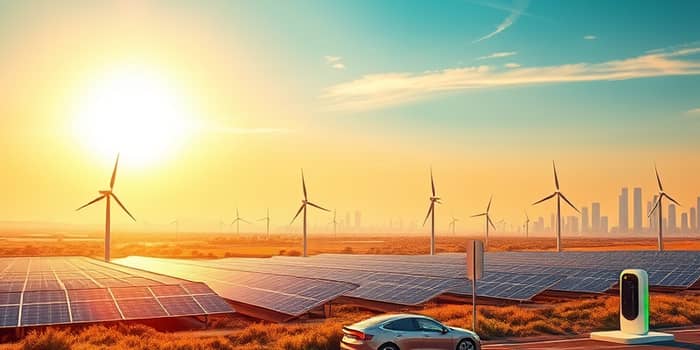
The global energy landscape is undergoing a profound transformation as nations, corporations, and communities direct unprecedented levels of capital toward clean power solutions. In 2025, global energy investment in 2025 is projected to reach a record $3.3 trillion, with a remarkable two-thirds of that total, $2.2 trillion, fueling renewables, grids, storage, and electrification.
This shift represents more than just numbers on a balance sheet—it reflects the collective ambition to secure our future, tackle climate change, and redefine economic growth. Understanding the forces behind this surge, the regional leaders driving progress, and the challenges that remain is essential for any stakeholder committed to a resilient energy transition.
Over the past several years, investments in clean energy have consistently outpaced those in fossil fuels. In 2025 alone, spending on renewables and associated infrastructure is set to be approximately twice the capital allocated to oil, gas, and coal. Solar power has emerged as the single largest recipient of new capital, surpassing traditional oil production investments for the first time in history.
Meanwhile, electric mobility continues its meteoric rise. China remains a powerhouse in the electric vehicle market, attracting significant investment in manufacturing, battery technology, and charging infrastructure. This electrification trend is mirrored in Europe and North America, where automakers and energy utilities forge partnerships to support the next generation of zero-emission transport.
Several intertwined factors are accelerating the shift toward renewables:
Beyond these drivers, rapid innovation in energy storage and digital grid management is smoothing the integration of variable renewable sources, enabling a more reliable and flexible power system.
China holds the crown as the world’s largest energy investor, pouring resources into solar, wind, and grid modernization. In 2024, Asia accounted for nearly 64% of all new global renewable capacity additions, followed by Europe and North America.
The United States has also made significant strides. Thanks to federal support, more than $227 billion in public and private capital has been pledged to utility-scale solar, storage, wind, and hydrogen projects over the past two years. Manufacturing investments, spurred by the Inflation Reduction Act, include $9.6 billion for solar modules, $14.4 billion for battery storage, and new domestic wind and hydrogen facilities.
Despite these advances, significant disparities persist. Central America, the Caribbean, and many developing regions secured only a small fraction of new renewables in 2024, highlighting the critical need for equitable finance mechanisms.
While capital flows are robust, several hurdles must be overcome to sustain momentum:
Addressing these barriers demands coordinated action among governments, multilateral institutions, and private-sector leaders to streamline regulations, de-risk investments, and build resilient supply chains.
To align with the IEA’s Net Zero Emissions Scenario and triple global renewable capacity by 2030, annual clean energy investment must ramp up to $5.3 trillion. Achieving this target will require:
Corporate buyers can further accelerate progress by signing long-term renewable power purchase agreements and investing directly in clean energy projects. Communities and local governments also play a vital role in permitting, land use planning, and implementing energy efficiency measures.
Ultimately, the success of the global energy transition hinges on a shared vision and concerted effort. By harnessing the power of policy incentives, technological innovation, and inclusive finance, stakeholders can bridge the remaining gaps and steer the world toward a sustainable, net-zero future.
As investors, policymakers, businesses, and citizens unite around the common goal of clean energy, the record-breaking capital flows of today will lay the foundation for a healthier planet, resilient economies, and abundant opportunities for generations to come.
References













